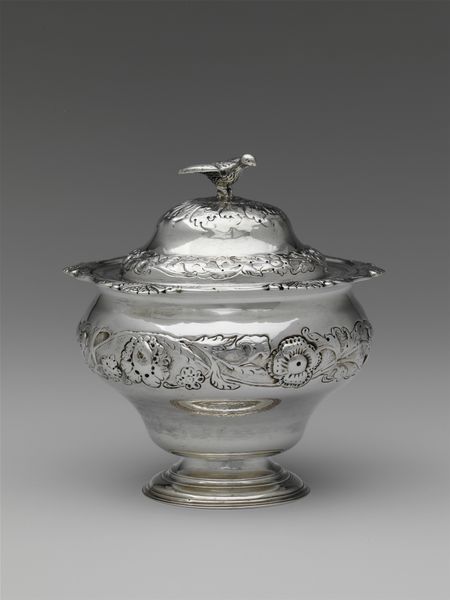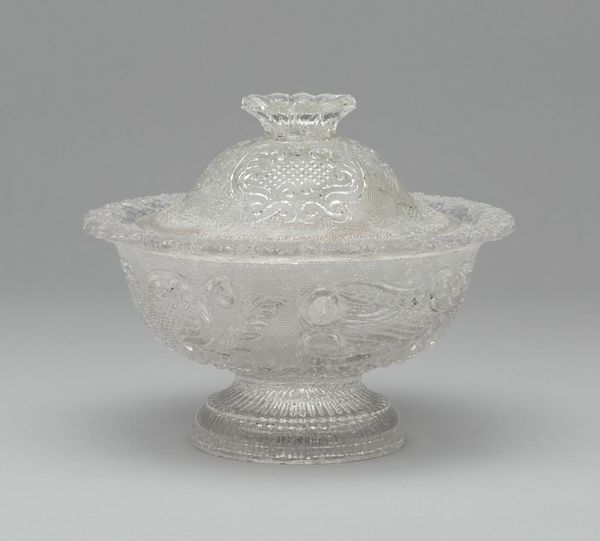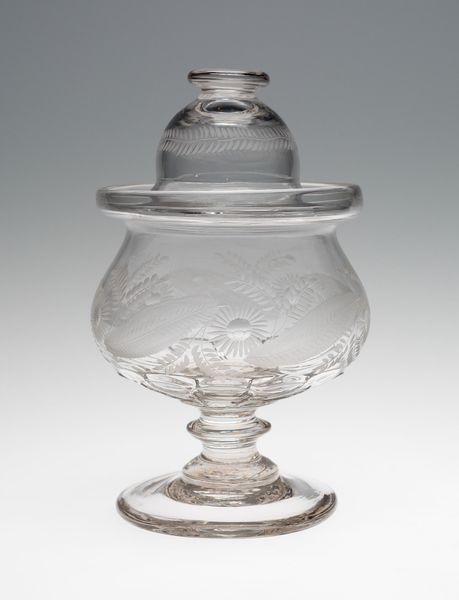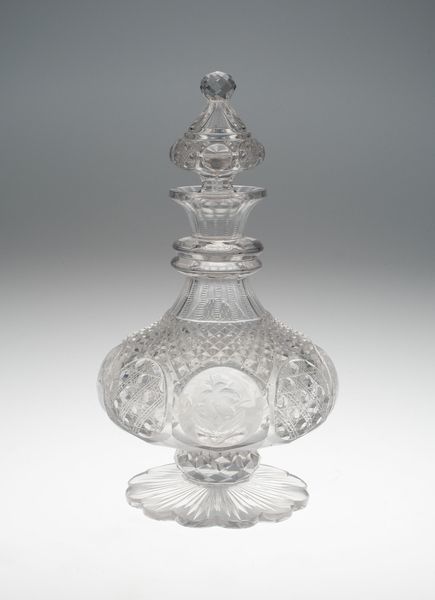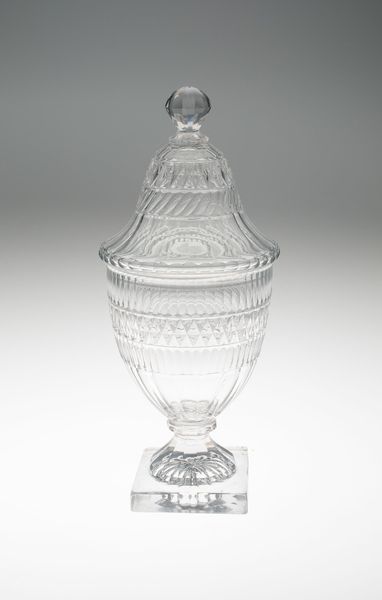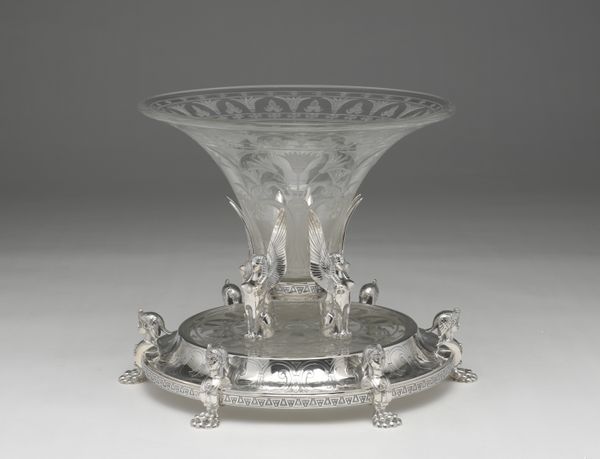
glass
#
glass
#
stoneware
#
decorative-art
Dimensions: H. 6 3/8 in. (16.2 cm); Diam. 6 5/16 in. (16 cm)
Copyright: Public Domain
This elegant sweetmeat compote, with no known date, was crafted by Bakewell, Pears and Company, a firm that operated between 1836 and 1882. During this time, the rise of industrialization deeply affected both the production and consumption of goods. Serving dishes like these were often associated with the rituals of domesticity, particularly within middle and upper-class white families. They reflected the aspirations of social mobility of the period. The presentation of food became an important marker of taste, status, and access. Consider, too, that sugar itself had a complex history, deeply intertwined with colonialism, trade, and enslavement. The delights that this compote might have held came at a human cost. What stories might this object tell us about the intimate lives of those who used it, about the power dynamics of the era, and about the global networks that enabled its existence?
Comments
No comments
Be the first to comment and join the conversation on the ultimate creative platform.


